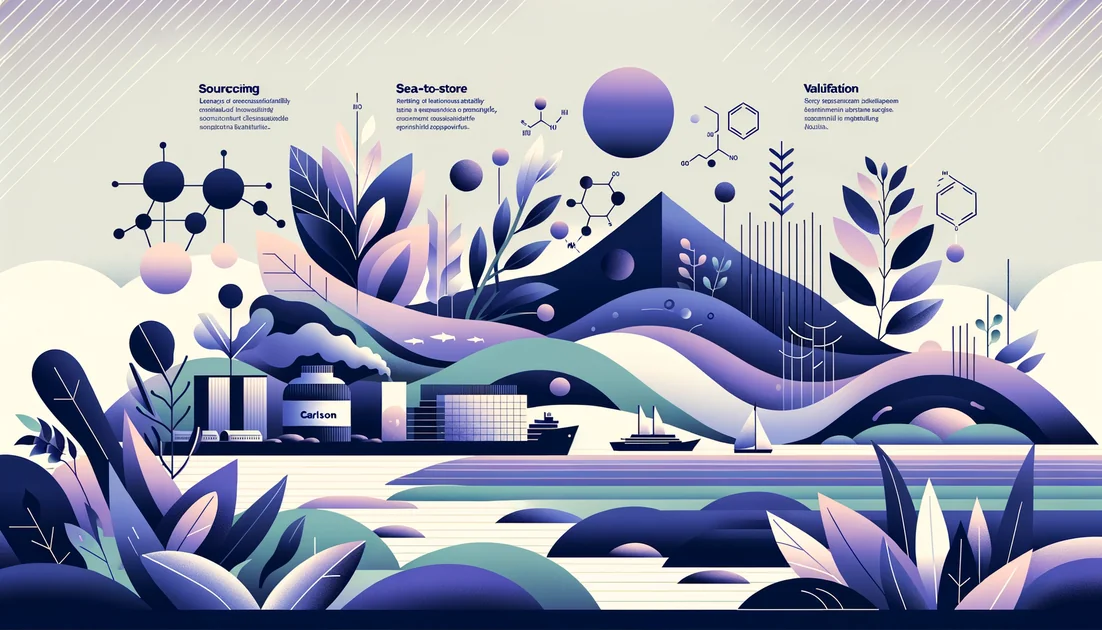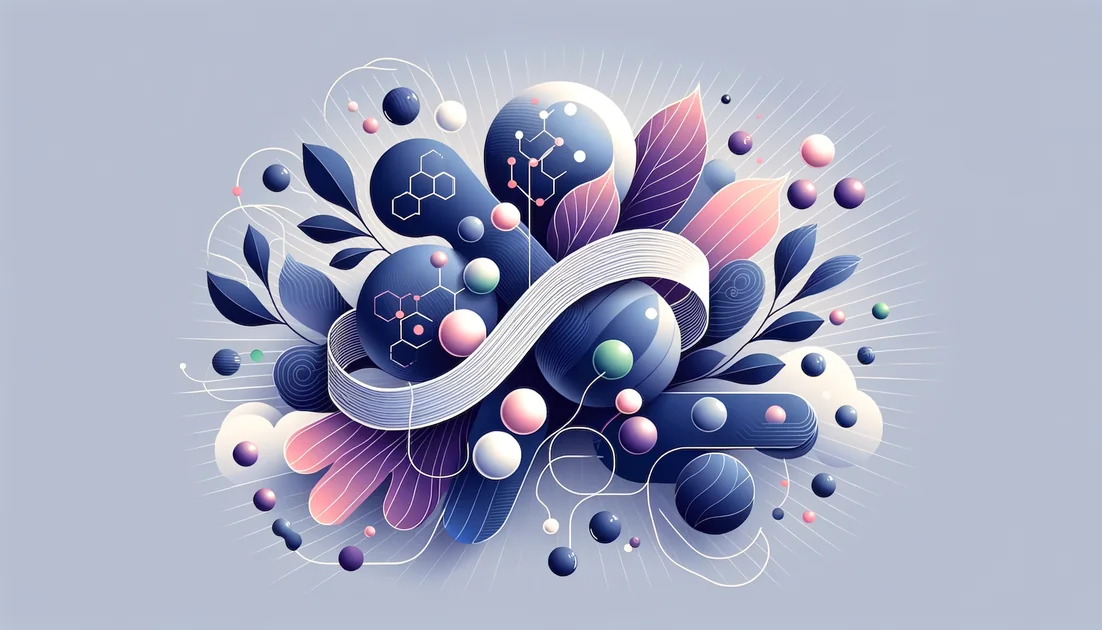
The Onion's Secret: From "Vitamin P" to Senolytics—What Quercetin Really Does
You slice a red onion and your eyes sting. For centuries, cooks and healers swore those pungent bulbs soothed colds and strengthened the body. Modern scientists gave the yellow pigment inside a name—quercetin—and then, surprisingly, circled back to onions to learn how best to use it. [1][2]
- Evidence
- Promising
- Immediate Effect
- Yes (mild): endothelial flexibility improved within ~1–2 hours with EMIQ in one trial; most outcomes are not immediate. → 6–12 weeks
- Wears Off
- Likely within weeks after stopping; long-term persistence is unclear from current trials.
From oak forests to kitchen tables
The very name "quercetin" reaches back to oak forests—Latin quercetum—because the compound was first tied to bark and leaves before we found it throughout foods like onions, apples, tea, and capers. [1][19] In the 1930s, Nobel laureate Albert Szent-Györgyi noticed that crude citrus extracts calmed fragile capillaries in ways purified vitamin C could not. He dubbed the mysterious helper "vitamin P," for permeability; today we know many of those helpers were flavonoids related to quercetin, including rutin (a quercetin glycoside). [2]
The first twist: pills aren't always better than plants
Chemists can pack quercetin into a capsule, but nature often puts it in foods with a little sugar attached—a glycoside—which changes how your gut absorbs it. Decades of careful human work showed a simple, counterintuitive truth: quercetin from onions (mostly glucose-attached forms) is absorbed better and faster than many supplement forms or tea-based rutin. In one classic study, onion-derived quercetin was absorbed at roughly twice the rate of the aglycone (plain quercetin) and about three times that of rutin; blood levels peaked within an hour after onions, versus nine hours after rutin. [4][5] That helps explain why, despite quercetin's chemistry looking heroic on paper, what reaches your bloodstream depends on the form. As the American Chemical Society put it, "Quercetin's bioavailability is poor, but its glycosides are readily absorbed." [14] A new food-grade innovation, enzymatically modified isoquercitrin (EMIQ), takes the onion lesson further by adding short glucose chains. In a randomized crossover study of adults at cardiovascular risk, a single EMIQ-containing meal boosted circulating quercetin metabolites and improved artery flexibility (flow-mediated dilation) within 1.5 hours—an unusually fast, meal-to-vessel effect. Blood pressure didn't change acutely, but the vessel response did. [6]
What it actually does in people
When researchers pool clinical trials, quercetin shows modest but measurable support for cardiovascular health—chiefly small reductions in blood pressure with consistent use. Meta-analyses of randomized trials report average drops of roughly 3 mmHg (systolic) and 2–3 mmHg (diastolic), with clearer effects at doses ≥500 mg/day and when taken for at least 8 weeks. [7][8] The numbers are modest—more nudge than makeover—but across populations, that kind of nudge matters. The immune story is more nuanced. In trained cyclists pushed into heavy, stress-inducing workouts, a double-blind trial found quercetin didn't overhaul immune markers but did cut post-exercise respiratory illnesses during the two-week recovery window. [9] Yet when more than a thousand community adults took 500–1,000 mg/day for 12 weeks, the overall group saw no clear benefit; intriguingly, physically fit adults over 40 had fewer and milder sick days on the higher dose. [10] Real life, it turns out, is messier than lab benches. Allergies add another thread. Several Japanese trials using more bioavailable quercetin forms (EMIQ or a phytosome) reported improvements in seasonal eye itching and overall symptom scores over 4–8 weeks, especially for ocular symptoms. [23][24] Those studies are encouraging but small; they fit with the broader picture of quercetin as a gentle modulator rather than a sledgehammer.
The second twist: an aging-science cameo
Quercetin's most surprising chapter arrived from a different direction: cellular aging. A Mayo Clinic team hunting for "senolytics"—compounds that help the body clear spent, inflammatory "zombie" cells—found that a pairing of an old cancer drug (dasatinib) with quercetin knocked out different subsets of these problem cells. As geriatrician James Kirkland explained, "We purposely picked agents that have a short elimination half-life..we wanted to use what we call a 'hit-and-run' approach." [11] Early human pilots followed. In idiopathic pulmonary fibrosis, a grim lung disease tied to cellular senescence, intermittent courses of dasatinib plus quercetin improved physical function (walking distance, gait speed) over three weeks. [21] In people with diabetic kidney disease, a brief three-day course of the combo reduced markers of senescent cells in fat and skin within 11 days. [22] These are small, carefully monitored trials that tested a drug–nutrient duo, not quercetin alone—promising signals, not prescriptions. Kirkland is emphatic: "We spend a lot of time..telling people absolutely not to take these drugs." [12] Others note the potential is "transformative" if confirmed, but we're not there yet. [13]
Mechanisms, translated
Antioxidant bodyguard—within reason: Quercetin can neutralize reactive molecules, but in humans the blood levels after food or supplements are tiny (often under 1 micromolar), so benefits likely come from nudging our own defenses rather than acting as a stand-alone mop. [3]
Traffic control for histamine: By stabilizing the cells that release histamine and related signals, quercetin may ease itchy, watery allergic symptoms over weeks—consistent with the seasonal trials above. [23][24]
Zinc "usher": In cells, quercetin can shuttle zinc ions across membranes—one reason it's been explored in antiviral research. That's biochemical plausibility, not clinical proof. [18]
Back to the cutting board
Which everyday foods carry the most quercetin? Capers top the charts, but for most of us it's onions—especially the red, outer layers—plus apples and tea. [19][20] Ironically, old kitchen wisdom about onions and sniffles lines up with modern absorption science: the onion's natural glucose tags seem to help quercetin slip through the gut wall. [4][5]
If you're considering it
What dose has been studied? Cardiovascular trials often used 500–1,000 mg/day for 8–12 weeks; allergy studies used lower, more bioavailable forms (e.g., 100–200 mg/day EMIQ or phytosome) over 4–8 weeks. [7][8][23][24]
What form? Food first; if supplementing, isoquercitrin, EMIQ, or phytosome forms may raise blood levels more than plain quercetin, and taking with meals can help. [4][5][6]
What to expect? Think subtle: a small blood-pressure nudge over weeks, seasonal eye-symptom relief, and—if you're training hard—possibly fewer post-race colds. [7][8][9][23]
What not to do: Don't try senolytic "stacks" on your own; early human data paired quercetin with a prescription drug under supervision. [21][22][12]
Safety notes in plain English
The FDA recognizes high-purity quercetin as GRAS for certain foods up to 500 mg per serving. [15] Short-term trials up to 1,000 mg/day look well-tolerated, but long-term, high-dose safety is less certain. A safety review flags potential kidney concerns in vulnerable patients and interactions that can alter drug levels. [16] Breast cancer and transplant groups also warn about interactions with specific medicines (for example, cyclosporine; some antibiotics; digoxin). If you take these, check with your clinician first. [17]
"Quercetin's bioavailability is poor, but its glycosides are readily absorbed." — American Chemical Society [14]
"We purposely picked agents..with a short elimination half-life..a 'hit-and-run' approach." — James Kirkland, MD, PhD [11]
The honest bottom line
Quercetin is not a miracle. But it is a quietly useful dietary ally: better absorbed from smart forms, capable of small cardiovascular improvements with steady use, possibly helpful for seasonal eyes and for athletes under heavy stress. And in aging science, it has stepped into an unexpected supporting role—one that demands clinical humility and rigorous trials before anything moves from lab to life. [7][8][9][10][21][22]
Key takeaways
- •Quercetin's absorption depends on form: food glycosides (like in onions) and enhanced versions absorb better than aglycone or rutin capsules.
- •For gentle blood-pressure support, trials commonly used 500–1,000 mg/day of plain quercetin for 8–12 weeks, yielding a few mmHg reductions.
- •Seasonal allergy studies often used 100–200 mg/day of enhanced forms (EMIQ/phytosome) for 4–8 weeks, with notable relief in eye symptoms.
- •Athletes seeking fewer post-event colds typically used around 1,000 mg/day during heavy training blocks.
- •Taking quercetin with meals leverages the food matrix; regular servings of red/yellow onions can meaningfully contribute better-absorbed quercetin.
- •Caution: short-term use up to ~1,000 mg/day appears well-tolerated, but long-term high-dose safety and drug interactions (e.g., cyclosporine, certain antibiotics, digoxin; kidney disease) warrant clinician guidance.
You might also like
Explore more of our evidence-led investigations, comparisons, and guides across every article style.

Carlson (J.R. Carlson Laboratories, Inc.)
Carlson: Sea-to-Store Omega-3 Specialist—Elite Third-Party Testing, Solid Value, and a Transparency Gap

TMG (betaine anhydrous; trimethylglycine) vs Betaine HCl (betaine hydrochloride)
Pick TMG if your goal is methylation/homocysteine support; pick Betaine HCl only for short-term gastric acid support (e.g., with pH-dependent drugs) and ideally under clinician guidance. [3][1][2][10][11]

Best for ADHD (Adults)
Micronutrients (broad formula): 2–8 weeks, best evidence in adults [2]

Betaine (trimethylglycine; "TMG")
Picture a 19th-century sugar factory. Amid the steam and sweet molasses, a German chemist isolates a peculiar, salt-like substance from beets. He names it for the plant—betaine—and unknowingly hands future doctors and athletes a tool that can nudge the body's chemistry with surprising precision.

Quercetin + Bromelain + C: Allergy & Airways Combo?
Theory-supported, partially studied combo; helpful for some, but true "A+B>C than A or B alone" synergy is unproven.

Tocotrienols
The stealthier cousins of vitamin E—built with springy tails that move differently in cell membranes and behave differently in your body.


